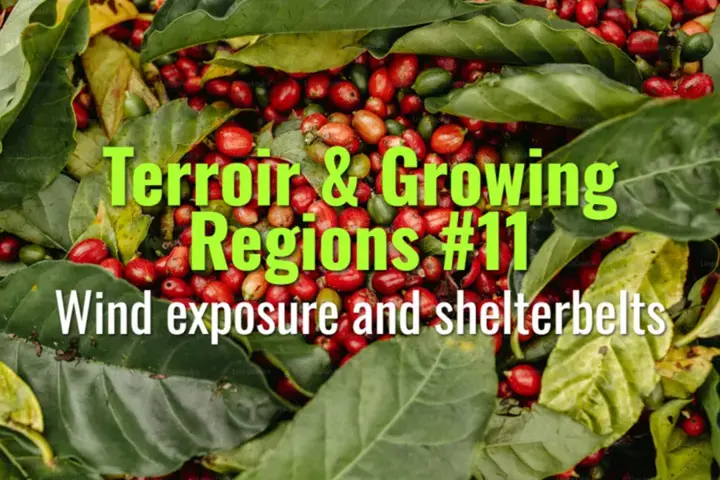Wind exposure and shelterbelts
This topic explains how wind affects coffee plants, the risks of excessive exposure, and how shelterbelts and windbreaks are used to protect plantations and improve sustainability.
- Coffee Basics Nerds
- 2 min read
Article 11 of 12 in Terroir & Growing Regions/

Impact of Wind on Coffee
- Desiccation: Strong winds increase evapotranspiration, leading to water stress.
- Mechanical damage: Wind can break branches, strip leaves, and cause cherry drop.
- Temperature effect: Cold winds at high altitudes increase frost risk.
- Pollination influence: Excess wind disrupts pollinator activity in Robusta and Liberica, which rely on cross-pollination.
Shelterbelts and Windbreaks
- Definition: Rows of trees or shrubs planted strategically to reduce wind speed across coffee fields.
- Functions:
- Protect plants from mechanical damage.
- Reduce water loss and soil erosion.
- Create microclimates favorable for growth.
- Provide shade, organic matter, and sometimes additional crops (fruit, timber).
Common Species Used
- Grevillea robusta (silky oak): Widely used in East Africa for tall, fast-growing shelterbelts.
- Erythrina spp. (coral trees): Nitrogen-fixing, improving soil fertility.
- Inga spp.: Provide both shade and wind protection, common in Latin America.
- Bamboo and hedgerows: Used as dense, quick-growing barriers.
Design Considerations
- Orientation: Placed perpendicular to prevailing winds.
- Spacing: Typically every 100–200 meters depending on wind intensity.
- Height: Effective protection extends ~10 times the height of the shelter trees.
- Diversity: Mixed species increase resilience and ecological benefits.
Benefits Beyond Wind Protection
- Enhances biodiversity by hosting birds and insects.
- Adds organic matter through leaf litter.
- Provides secondary income (timber, fruit, firewood).
- Reduces need for irrigation by lowering evaporation.
Challenges
- Competition for water, light, and nutrients if poorly managed.
- Overly dense barriers may reduce airflow, increasing disease pressure.
- Requires regular pruning and maintenance.
Lasting Importance
Wind exposure can reduce yields, stress plants, and damage quality, especially in high-altitude or exposed regions. Shelterbelts and windbreaks create resilient microclimates, protecting coffee farms while also supporting biodiversity, soil health, and long-term sustainability.